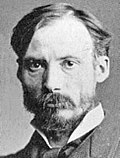Fichièr:La Grenouillère (Auguste Renoir) - Nationalmuseum - 19486.tif

Talha d'aquesta previsualizacion JPG per aquest fichièr TIF: 744 × 600 pixèls. Autras resolucions : 298 × 240 pixèls | 595 × 480 pixèls | 952 × 768 pixèls | 1 270 × 1 024 pixèls | 2 540 × 2 048 pixèls | 3 234 × 2 608 pixèls.
Fichièr d'origina (3 234 × 2 608 pixèl, talha del fichièr: 24,16 Mo, tipe MIME: image/tiff)
Istoric del fichièr
Clicar sus una data e una ora per veire lo fichièr tal coma èra a aqueste moment
| Data e ora | Miniatura | Dimensions | Utilizaire | Comentari | |
|---|---|---|---|---|---|
| actual | 8 octobre de 2016 a 11.03 |  | 3 234×2 608 (24,16 Mo) | AndreCostaWMSE-bot | {{Artwork |other_fields_1 = |artist = {{Creator:Pierre-Auguste Renoir}} |title = {{en|La Grenouillère}} {{sv|La Grenouillère}} |wikidata = Q10908882 |object_type = painting |description... |
| 8 octobre de 2016 a 11.03 |  | 3 234×2 608 (24,16 Mo) | AndreCostaWMSE-bot | {{Artwork |other_fields_1 = |artist = {{Creator:Pierre-Auguste Renoir}} |title = {{en|La Grenouillère}} {{sv|La Grenouillère}} |wikidata = Q10908882 |object_type = painting |description... |
Paginas que contenon lo fichièr
I a ges de pagina que compòrta un ligam vèrs aqueste imatge.
Usatge global del fichièr
Los autres wikis seguents utilizan aqueste imatge :
- Utilizacion sus ar.wikipedia.org
- Utilizacion sus en.wikipedia.org
- Utilizacion sus en.wikiquote.org
- Utilizacion sus es.wikipedia.org
- Utilizacion sus fr.wikipedia.org
- Utilizacion sus hy.wikipedia.org
- Utilizacion sus hyw.wikipedia.org
- Utilizacion sus ja.wikipedia.org
- Utilizacion sus ru.wikipedia.org
- Utilizacion sus sv.wikipedia.org
- Utilizacion sus tr.wikipedia.org
- Utilizacion sus uk.wikipedia.org
- Utilizacion sus www.wikidata.org
- Q10908882
- Wikidata:WikiProject sum of all paintings/Creator/Pierre-Auguste Renoir
- Wikidata:WikiProject sum of all paintings/Subject/Paris
- User:Kringln/Sitelink report
- Wikidata:WikiProject sum of all paintings/Old European art missing genre/Sweden
- Wikidata:WikiProject sum of all paintings/Collection/Nationalmuseum/19th Century






